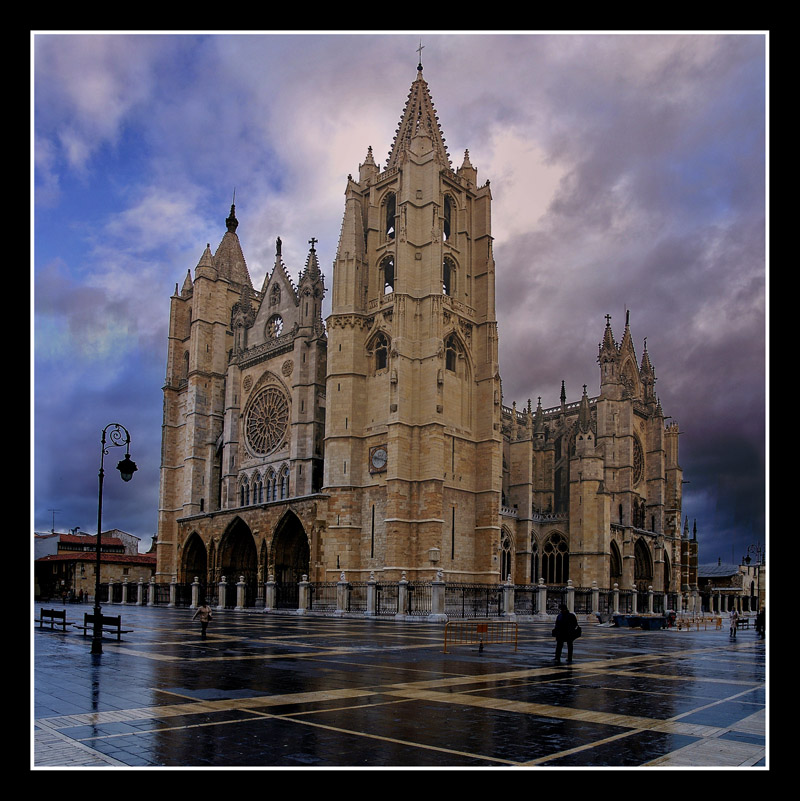
Located in northwest Spain along the Camino de Santiago, León Cathedral (Catedral de Santa María de Regla de León) is a French-style Gothic cathedral built in the 13th century over the ruins of ancient Roman baths. Intricately carved portals, glorious rose windows, one of the oldest choirs in the country, and beautiful sculptures such as the Virgen de la Esperanza are just a few of the cathedral's many impressive features.
A Christian community is first recorded in León in 254 AD, but no bishop is recorded in Visigothic times. The bishopric of León was established in 860, after King Ordoño conquered the city from the Moors. It was subordinate to the diocese of Toledo until 1105.
Bishop Martin Fernandez began León Cathedral with funds from King Alfonso the Wise, in 1255 over the ruins of 2nd-century Roman baths. The first recorded master builder was one Simón (from 1261), followed soon after by Enricus or Enrique (d.1277), who was also the master builder at Burgos Cathedral. The cathedral mostly dates from the 13th century, but was not fully completed until the 19th century (when it was also extensively restored) due to periodic problems with funding and structural integrity. This Cathedral is without doubt the finest Gothic building in Spain and was closely modelled on the flamboyant gothic royal cathedrals of France, especially Reims Cathedral and St-Denis Basilica.
Its wide west facade, made of a lovely pale yellow stone, is flanked by two towers and pierced with three exquisitely carved Gothic portals and a large rose window. The south transept also has three carved portals and a rose window.
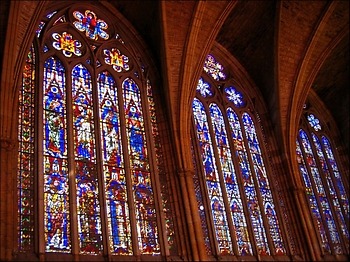
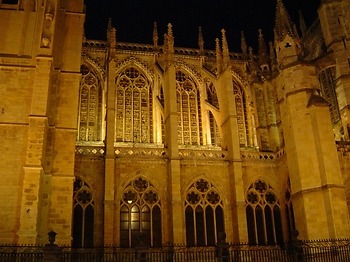
The north transept adjoins to the 13th- and 14th-century cloister, which has carved capitals, Romanesque and Gothic tombs, and some faded frescoes. Inside 125 medieval stained glass windows illuminate a harmonious, fully French Gothic interior with three aisles, a short transept, a five-bay choir, and an ambulatory with radiating chapels. The effect of the pale stone combined with dazzling rays of sunlight filtering through the windows have given the cathedral the nickname "House of Light."
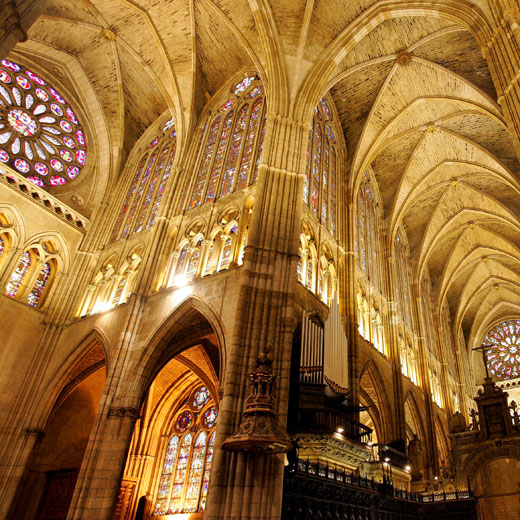
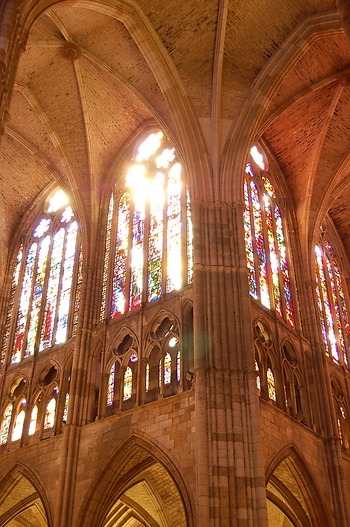
León Cathedral's choir stalls, which are among the oldest in Spain, were carved of walnut by Flemish artists in the 15th century. A much-revered statue of the Virgen de la Esperanza, depicting the Virgin Mary when she was pregnant with Jesus, dates from the 13th or 14th century and is displayed in a side chapel off the choir. The Mai Chapel contains an altarpiece by Nicolás Francés (15th century) and a silver reliquary containing the relics of San Froilán, patron saint of Leon. The Cathedral Museum (Museo Catedralicio Diocesano de León) houses nearly 1,500 works of art from prehistoric times to the 18th century, including as many as 50 sculptures of the Virgin, a triptych by the School of Antwerp, a 10th-century Mozarabic Bible and numerous manuscripts.
The cathedral is the most prominent building of León and one of the most important in Spain but unfortunately it is still greatly unknown internationally and also on a national level due to the fact that Leon is not a typical destination for tourists and the city has not done the necessary to attract visitors. However it is one of Spain’s greatest buildings and should not be missed by anyone. Apart from the Cathedral León has a wealth of assets dating back to the first Roman settlements and even prehistoric works.
Originally, under the current location of the cathedral, the Legio VII Gemina had built their baths, which were even larger than the current building. During the great restorations of the nineteenth century its remains were discovered, and in 1997 others were explored near the south façade.
During the Christian Reconquista the ancient Roman baths were converted into a royal palace. King Ordoño II, who had occupied the throne of Leon in 916, defeated the Arabs in the Battle of San Esteban de Gormaz in 917.As a sign of gratitude to God for his victory, he gave up his palace to build the first cathedral. The tomb of Ordoño II of Leon, who died in 924, can be found within the cathedral. León is a fascinating city and full of wonderful architecture and unique historical sites the cathedral is just the tip of the iceberg, it must be one of Spain’s most undiscovered cities and yet one its wealthiest. I will be writing more on León in the near future, as it is a place that should be enjoyed by everyone.